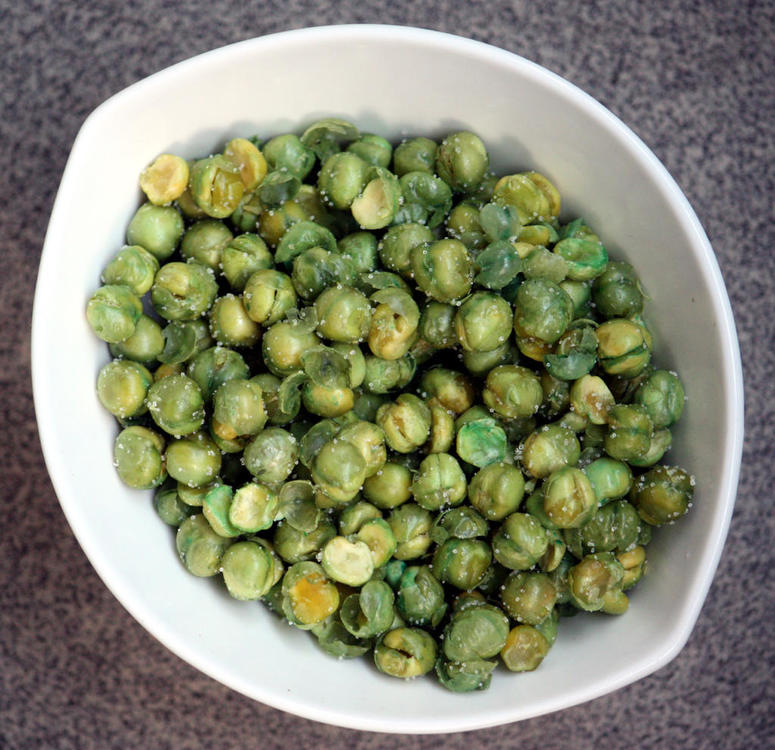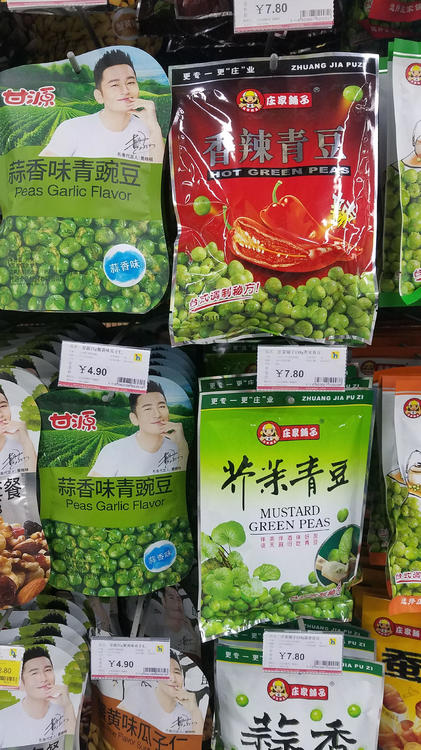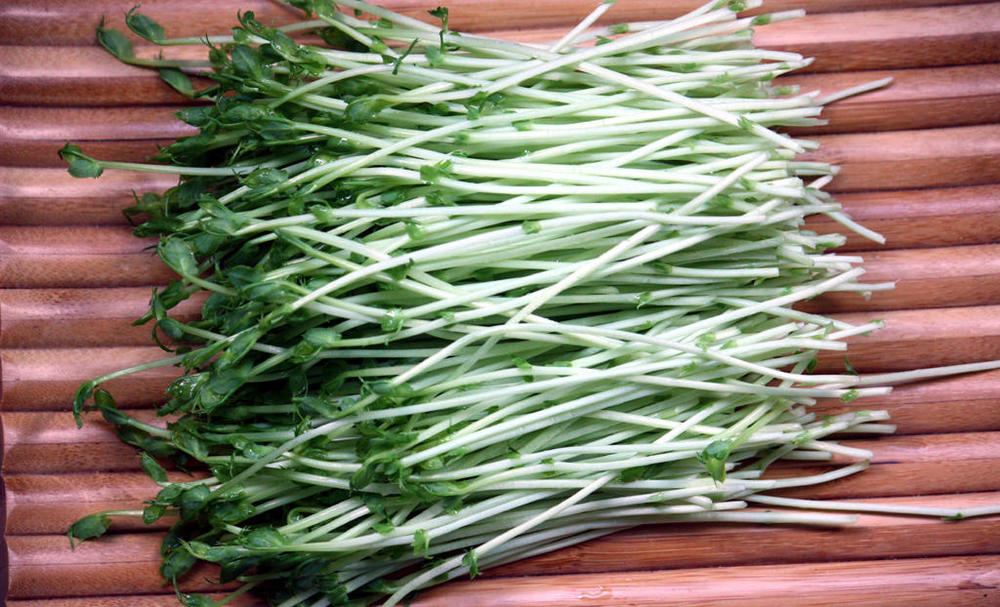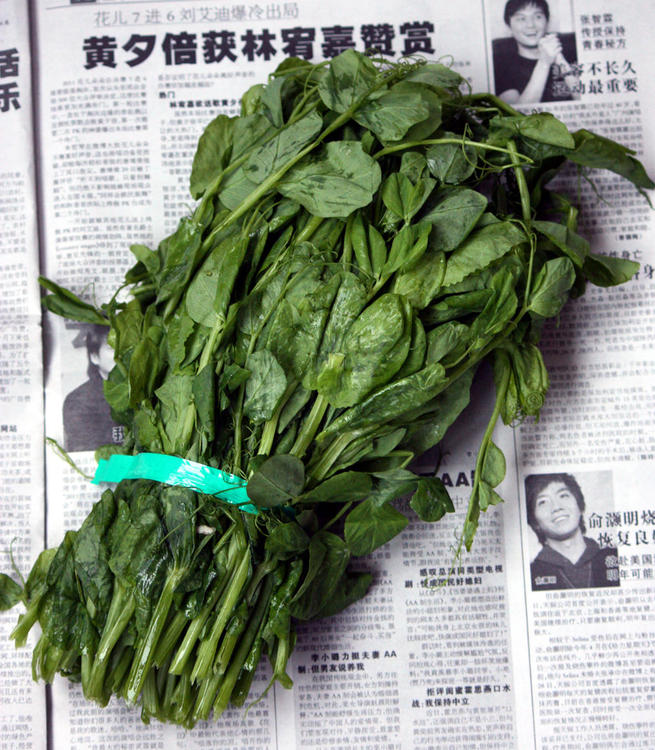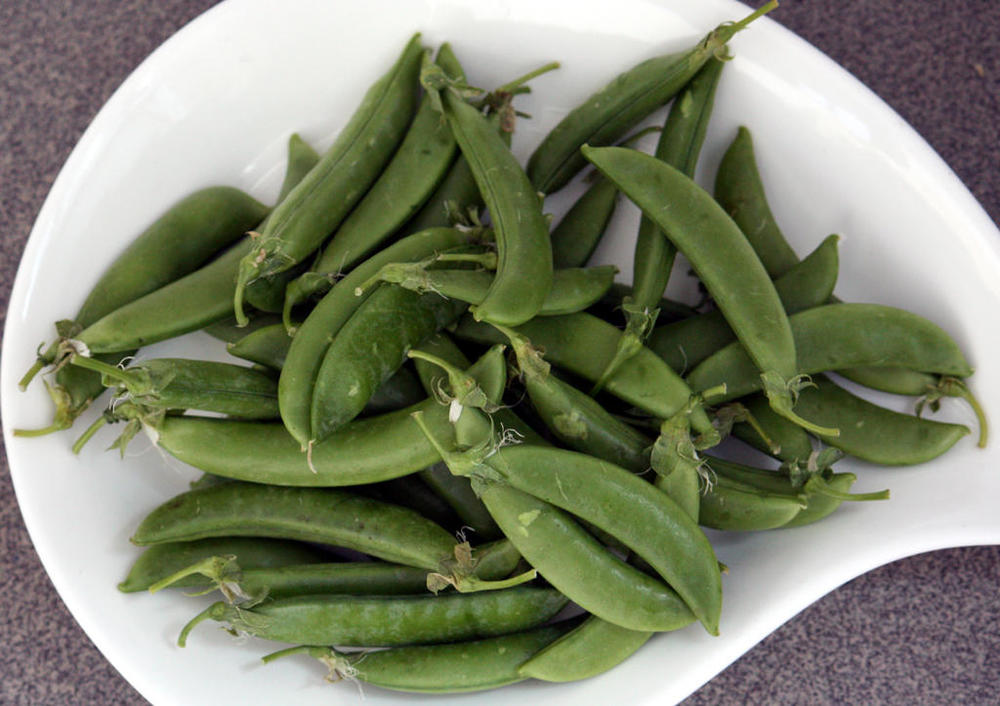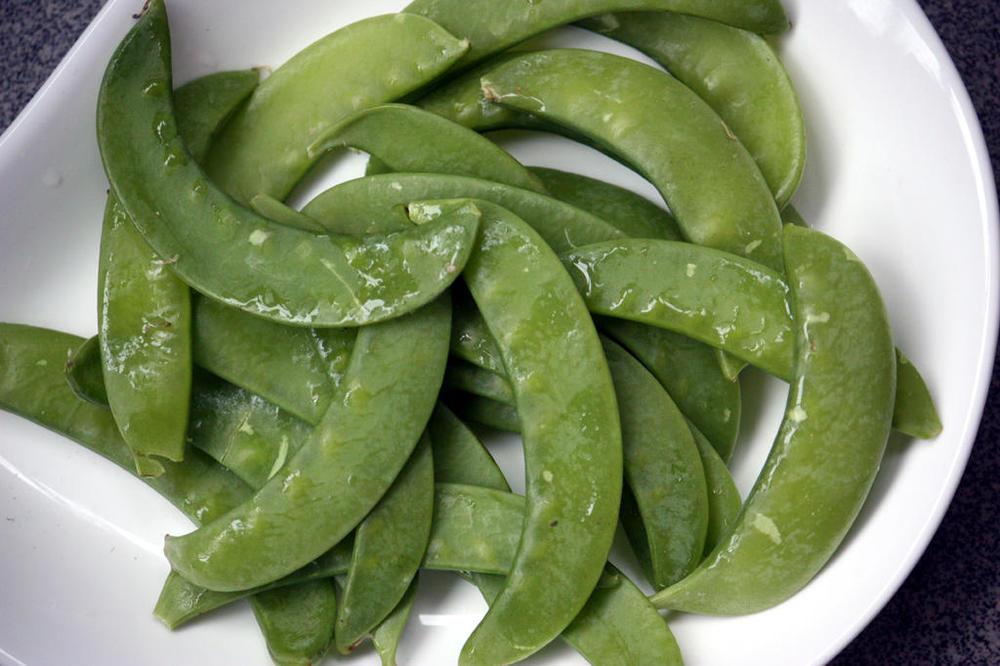Pisum sativum.
Give peas a chance.
Peas are grown in China but I rarely see fresh peas in their natural state in the pod, or out. On occasion, they turn up pod-free in bags in some supermarkets. I bought them once. They were so old that all the sugars had turned to starch and they were rock hard. Boiling them for hours made no difference whatsoever. Inedible. Also frozen fresh peas are unheard of. Even more occasionally, I have seen canned peas, but not very good ones.
So where are all these peas going. Well, mainly into the snack market. Roasted salted and flavoured peas are widely available. I used to buy and enjoy them, but I got scared of how long my teeth would last biting into them, so I haven't had any for years.
Salted dry roasted peas
What we do get however as a non-snack item, but more a vegetable are pea sprouts 豌豆芽 (Mand: wān dòu yá; Cant: wun2 dau6*2 ngaa4), made just like all other bean sprouts.
We also get pea greens 豌豆苗 (Mand: wān dòu miáo; Cant: wun2 dau6*2 miu4), used as is any other green vegetable.
What we do get in pods are sugar snap peas, Pisum sativum var. macrocarpon. In Mandarin Chinese, 甜豆 (tián dòu), meaning 'sweet bean', but in Cantonese 蜜豆 (mat6 dau6*2), translating as 'honey bean'. These an the next example are both sometimes referred to by their French name 'mange tout', meaning 'eat all', as the pods are almost often eaten along with their content.
And, snow peas, Pisum sativum var. saccharatum, 荷兰豆/荷蘭豆 (Mand: hé lán dòu; Cant: ho4 laan4*1 dau6*2) , which means 'Holland beans'. I have no idea why they think they are from Holland. These are frequently cooked with squid and other seafood. The stems and leaves are also eaten.


